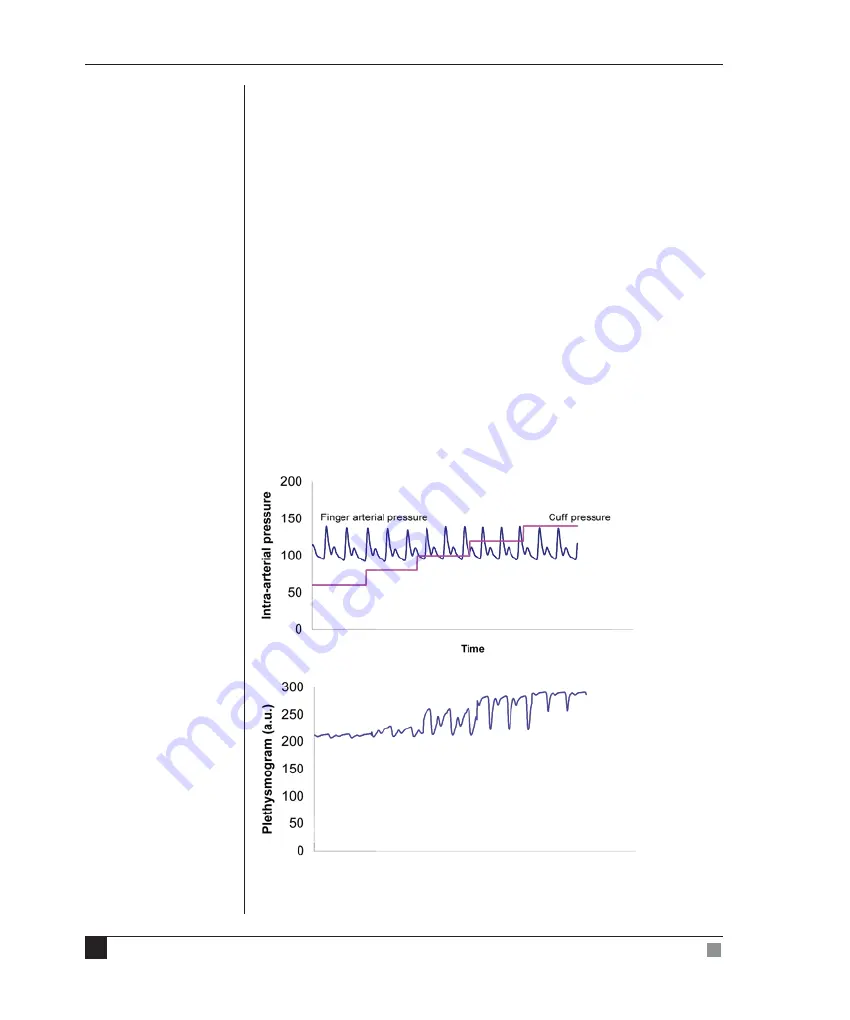
43
Human NIBP Nano
Owner’s Guide
on heart rate. The AC component is superimposed on a much more
slowly-changing component, oft en called the ‘DC’ component, which
reflects the state of the tissues, average blood volume, vasomotor tone
of arteries and arterioles, as well as sympathetic nervous system activity,
thermoregulation and respiration. High and low pass digital filters can
extract DC and AC components, if required, or LabChart’s spectral analysis
feature can be used to display the power of the frequencies present in a
signal.
If the pressure in the finger cuff is kept constant the sudden rise in finger
intra-arterial pressure during systole causes an increase in arterial
diameter, which is detected as an
increase
in light absorption and thus as a
decrease
in the signal detected by the plethysmograph. With constant cuff
pressure, during the diastolic phase of a beat as blood pressure declines
gradually, blood is expelled from the artery and consequently the amount
of light detected by the photodiode will increase again. Consequently the
plethysmogram oft en resembles an inverted finger pulse waveform.
Figure A–1 shows an example signal coming from a finger infrared
plethysmograph at five cuff pressure levels.
In Figure A–1 above the mean blood pressure was about 100 mmHg.
Figure A–1
Finger plethysmogram at
fi ve cuff pressure levels
(a.u = arbitrary units).
















































